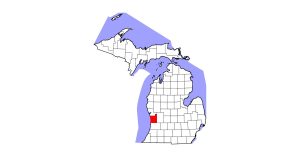Medina Spirit Necropsy Report Released

Due to widespread public interest, the California Horse Racing Board (CHRB) is releasing the following report on the necropsy/postmortem examination of Medina Spirit, the 3-year-old colt that died suddenly at the end of a workout on the morning of Dec. 6, 2021, at Santa Anita Park, in Arcadia, California. This examination was performed pursuant to CHRB Rule 1846.5 (Postmortem Examination).
Trained by Bob Baffert, Medina Spirit, winner of the 2021 Kentucky Derby, last raced on Nov. 6, 2021, when he finished second in the Breeders’ Cup Classic at Del Mar.
Postmortem examination of Medina Spirit was performed by a diagnostic team with expertise in pathology, toxicology, and equine drug testing, who are part of the California Animal Health and Food Safety (CAHFS) diagnostic laboratory system of the University of California, Davis, (UC Davis) School of Veterinary Medicine (SVM). Team members included Francisco Uzal, DVM, MSc, PhD, Dipl. ACVP; Javier Asin Ros, DVM, PhD, Dipl. ECVP; Monika Samol, DVM; Robert Poppenga, DVM, PhD, Dipl. ABVT; and Benjamin Moeller, PhD, Dipl. ABT.
John Pascoe, BVSc, PhD, Dipl. ACVS, executive associate dean of the SVM, working with CAHFS Director Ashley Hill, DVM, MPVM, PhD, had administrative oversight of the process.
Medina Spirit was transported to the CAHFS San Bernardino laboratory for the necropsy, which included gross examination of the body and internal organs, and specimen collection for microscopic examination, toxicology, drug testing, and genetic testing, with specimens also stored for possible future testing. After the examination was completed, Medina Spirit was cremated.
During the necropsy the horse was examined for obvious causes of death and visually apparent abnormalities. Tissue samples were collected from the heart, lungs, liver, spleen, kidney, stomach, intestines, muscle, brain, spinal cord, testicles, and other glands and were examined under the microscope for evidence of abnormalities. Liver tissue was tested for heavy metals (including, among others, cobalt), anticoagulants, pesticides, environmental contaminants, drugs, and other products. A blood sample was tested for thyroxine at Cornell University.
Blood, urine, and aqueous humor samples were screened for the presence of hundreds of substances, both legal medications and prohibited drugs, including, among others, erythropoietin (EPO), clenbuterol, and betamethasone.
Samples of heart tissue were sent to the University of Minnesota and to the UC Davis Veterinary Genetics Laboratory as part of ongoing research programs, in collaboration with the CHRB, investigating possible genetic causes of sudden death in racehorses.
After completion of all testing, the finalized report (with the necropsy photographs, microscopic sections, and toxicology and drug testing results) was provided to experts (Laura Kennedy, DVM, and Grant Maxie, DVM, PhD, Dipl. ACVP ) for independent review.
A definitive cause of death was not established despite extensive testing. Omeprazole (an antiulcer medication) and furosemide (aka Lasix, a diuretic) were detected in blood and urine samples consistent with the medication report filed with CHRB by the attending veterinarian.
No other drugs, heavy metals (including cobalt), or toxicants were detected. Thyroxine levels were below normal reference limits. Degenerative joint disease was seen in the fetlock and elbow joints. The microscopic changes in various tissues were mild and did not suggest a specific cause of death. The swollen lungs and foam in the trachea (windpipe), enlarged spleen, and congestion and mild hemorrhages in other tissues seen on the postmortem examination are common in horses dying suddenly and are compatible with, but not specific for, a cardiac cause of death.
An international study found that causes of exercise-related sudden death in racehorses are similar across multiple countries. In that study, a cause of death was determined with certainty in about 53% of cases, a presumptive cause was established in 25%, and in ~22% the specific cause of death could not be determined. Research is continuing worldwide, including at UC Davis to better understand and prevent these catastrophic deaths.
The process now continues with the required review of the necropsy report pursuant to CHRB Rule 1846.6 (Postmortem Examination Review). Based on subject matter expertise, Alina Vale, DVM, has been identified as the official veterinarian to perform the review. Additionally, a safety steward and a member of the board of stewards will be assigned to participate in the review. The report will be generated pursuant to the rule and published by the CHRB. Any potential rule violations uncovered in this process will be investigated by the CHRB and would result in a complaint and possible disciplinary action. This process takes place for every fatality occurring at a CHRB regulated facility.
Hill, Uzal, and Moeller, as well as CHRB Executive Director Scott Chaney, will make themselves available via a teleconference to answer questions from credentialed news media regarding the necropsy process and findings. The webcast audio link on the CHRB website will provide a way for the public to listen to this Q&A.
References:
Diab SS, Poppenga R, Uzal FA. Sudden death in racehorses: postmortem examination protocol.
Journal of Veterinary Diagnostic Investigation 2017, Vol. 29(4) 442–449.
Lyle CH, Uzal FA, McGorum BC, Aida H, Blissitt KJ, Case JT, Charles JT, Gardner I,
Horadagoda N, Kusano K, Lam K, Pack JD, Parkin TD, Slocombe RF, Steward BD, Boden LA.
Sudden death in racing Thoroughbred horses: an international multicentre study of post mortem
findings. Equine Vet J. 2011 May;43(3):324-31.
Written by:
Edited Press Release
Related Articles
Stay on top of the most recent Horse Health news with















